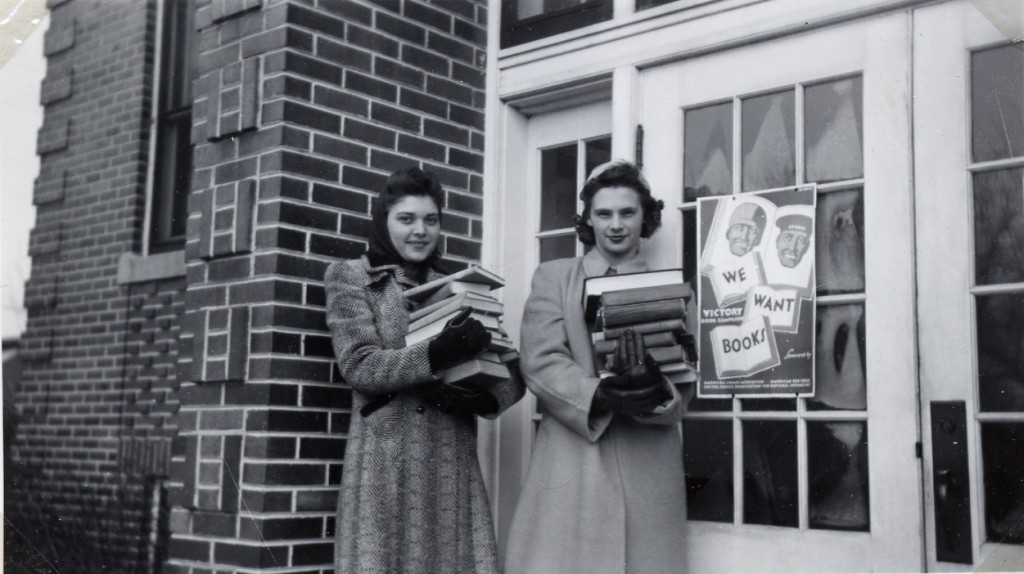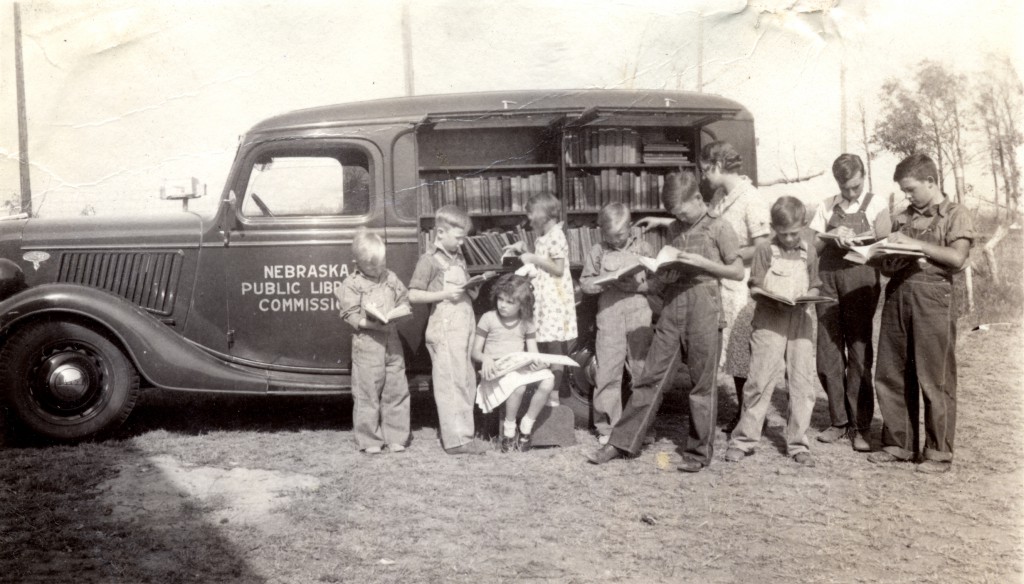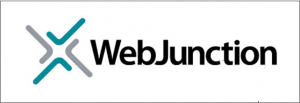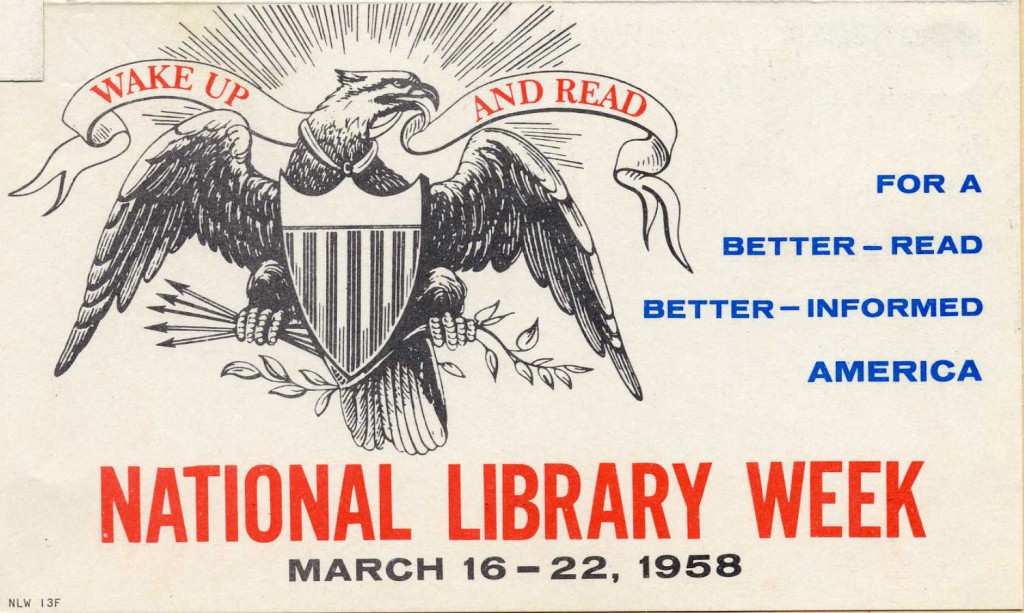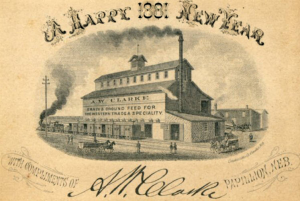Search the Blog
Categories
- Books & Reading
- Broadband Buzz
- Census
- Education & Training
- General
- Grants
- Information Resources
- Library Management
- Nebraska Center for the Book
- Nebraska Memories
- Now hiring @ your library
- Preservation
- Pretty Sweet Tech
- Programming
- Public Library Boards of Trustees
- Public Relations
- Talking Book & Braille Service (TBBS)
- Technology
- Uncategorized
- What's Up Doc / Govdocs
- Youth Services
Archives
Subscribe
Category Archives: General
New Government Publications Received at the Library Commission
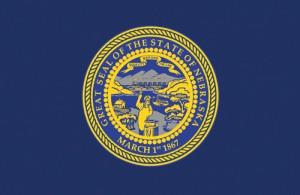 New state government publications ranging from Administrative Services to University of Nebraska Press, received in January 2015.
New state government publications ranging from Administrative Services to University of Nebraska Press, received in January 2015.
http://nlc.nebraska.gov/publications/archives/WhatsUpDoc/WUDJan2015.pdf
The Data Dude on WiFi
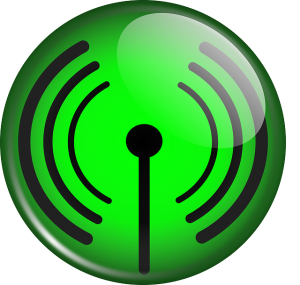 This week, in between answering public library survey related questions and reviewing actual surveys that have been submitted (the deadline is February 13, 2015), the Dude has been thinking about this new element on the survey asking for the number of annual wireless internet sessions. Some of the responses the Dude has been getting about collecting this data have been a thumbs down analogous to Joaquin Phoenix’s portrayal of Commodus in the movie Gladiator or the verbal equivalent: “I ain’t collectin’ this”. In all fairness, most are at least willing to provide a broad observation estimate of the use, which is probably a fairly decent number. Thank you for doing that. This makes me think about the question you might be asking, which is why is collecting this data valuable? Let’s start this odyssey by looking the importance of public WiFi.
This week, in between answering public library survey related questions and reviewing actual surveys that have been submitted (the deadline is February 13, 2015), the Dude has been thinking about this new element on the survey asking for the number of annual wireless internet sessions. Some of the responses the Dude has been getting about collecting this data have been a thumbs down analogous to Joaquin Phoenix’s portrayal of Commodus in the movie Gladiator or the verbal equivalent: “I ain’t collectin’ this”. In all fairness, most are at least willing to provide a broad observation estimate of the use, which is probably a fairly decent number. Thank you for doing that. This makes me think about the question you might be asking, which is why is collecting this data valuable? Let’s start this odyssey by looking the importance of public WiFi.
Quite simply, public WiFi is valuable because if you don’t have a data enabled device, you can’t get online if you aren’t somewhere that has WiFi availability. And we all want to be online, or at least have the option. If you do have a data enabled device (such as a tablet or smart phone), most likely you don’t want to use up your data or pay extra unless it is absolutely necessary (like if you get lost and need to look up a map or directions; if you need to find an address or phone number in a pinch; if you want to order a pizza online while you are out at the lake and pick it up on the way home; or if you are at Home Depot and want to know if the price they are asking for that garden weasel is comparable to Lowe’s). Those kinds of things. Iconic Displays recently produced an infographic entitled “Is Wifi the New Cigarette?” detailing the importance of WiFi to the average person:
- 30% of people claim they can’t go without WiFi access for more than an hour
- 60% of people can’t go without WiFi access for more than a day
- 39% say they would give up coffee for WiFi access
- 43% say they would go without chocolate for WiFi
- 75% said that a week without WiFi would leave them grumpier than a week without coffee
So we like our WiFi (for some, more than our coffee and chocolate), and we’ve come to expect it in many places in addition to our homes. These include hotel rooms, restaurants (including coffee shops), airports (and even some airplanes), public parks, public libraries, and many others. As usual, the Dude feels a need to toss in some data about how our WiFi compares to the rest of the world. Predictably, it ain’t good. According to Rotten WiFi, the U.S. ranks a measly 20th in the world with an average public WiFi download speed of 6.89. The U.S. was behind number 1 Lithuania (15.4 Mbps), Croatia (14.05), Estonia (13.75), and 16 others. The Dude could find no credible data on average WiFi speeds for libraries (either in Nebraska or the U.S.). Perhaps that would be the subject of a new data element on the survey…
Focus. Back on track with the value of collecting this data. As illustrated above, it’s important to have places in the community that have free WiFi that we can use. If we are traveling and just passing through or stay somewhere that doesn’t have WiFi, it’s nice to have the option to go to our public library and use our own WiFi enabled devices because if we have our own device, we don’t need to wait for a public access terminal. We can also sit on the library’s sofa, or near the library’s fireplace (if they have one), or outside (if the weather is nice) instead of on those public access chairs. Also, many rural communities do not have many areas where free public WiFi is available (other than the library), and many do not have access in their homes. So, the gathering of this data is, like other data gathering, important in that it demonstrates that libraries are providing a service to their community that is valuable.
One final note and that is that some libraries are also getting into the business of loaning WiFi devices to library card holders so they can use them in their own homes. An example is the New York Public Library, which recently scored $1 million from Google and $500,000 from the Knight Foundation. The devices (4G LTE mobile hot spots) are in high demand, and may be checked out for a longer duration (like, months). This is another example of libraries reaching out to meet the technology needs of the community. In NY, over 2 million people don’t have access to broadband or WiFi at home, so these kinds of services not only introduce those library users to WiFi, but provide valuable connectivity for those who simply can’t afford it. Shaka.
Throwback Thursday: Children from School District 62 selecting books from the bookmobile, circa 1930’s
Nebraska Public Library Commission bookmobile delivering books to school district 62 children, circa 1930’s
Posted in Books & Reading, General, Nebraska Memories
Leave a comment
New Government Publications Received at the Library Commission
 New state government publications ranging from Agriculture to University of Nebraska Press, received November and December, 2014.
New state government publications ranging from Agriculture to University of Nebraska Press, received November and December, 2014.
http://nlc.nebraska.gov/publications/archives/WhatsUpDoc/WUDNovDec2014.pdf
The Data Dude – eBooks and Audiobooks
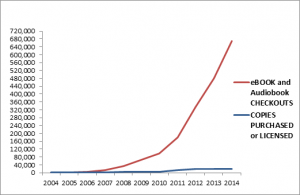 For this week, the Dude takes another quick look at eBooks and Audiobooks. He’s been working on some handouts and fact sheets for the Nebraska eReads program, and here is one of the resultant charts. As many of you know, eBook and Audiobook circulations are notably increasing, as evidenced by the chart to the right. Circulation has increased about 39% from last year. Keep in mind, however, that there are more participating OverDrive libraries as well (more borrowers in the ocean of electronic content that adds to the rise in circulation). A few other facts about eBooks and Audiobooks in Nebraska:
For this week, the Dude takes another quick look at eBooks and Audiobooks. He’s been working on some handouts and fact sheets for the Nebraska eReads program, and here is one of the resultant charts. As many of you know, eBook and Audiobook circulations are notably increasing, as evidenced by the chart to the right. Circulation has increased about 39% from last year. Keep in mind, however, that there are more participating OverDrive libraries as well (more borrowers in the ocean of electronic content that adds to the rise in circulation). A few other facts about eBooks and Audiobooks in Nebraska:
- There are now over 8 million eBooks available (over 88% increase from 2012)
- There are now over 794,000 AudioBooks available (over 96% increase from 2012)
- The return on investment for every dollar invested is $2.72
- Virtual visitors had to wait 204,502 times for desired titles in 2014
- There are now 167 Participating Libraries offering eBooks and Audiobooks via the OverDrive consortium
If the budget request for FY 2016 and FY 2017 is approved, the following additional items could be purchased/licensed:
For FY 2016:
- 8,300 eBooks could be purchased/licensed
- 2,800 Audiobooks could be purchased/licensed
For FY 2017:
- 9,000 eBooks could be purchased/licensed
- 3,100 Audiobooks could be purchased/licensed
Shaka.
A Balloon School in Nebraska?
 While I was in Rochester, New York this past Christmas visiting my husband’s family, my father-in-law showed me some letters from a World War I 2nd Lieutenant from Spencerport, NY, who had a Nebraska connection. Based on the letters and some further research, I found out that this young man was stationed at Fort Omaha, Nebraska for Balloon School.
While I was in Rochester, New York this past Christmas visiting my husband’s family, my father-in-law showed me some letters from a World War I 2nd Lieutenant from Spencerport, NY, who had a Nebraska connection. Based on the letters and some further research, I found out that this young man was stationed at Fort Omaha, Nebraska for Balloon School.
Fort Omaha (the Nebraska Memories picture to the left), located at 5730 North 30th Street, in Omaha, Nebraska, was opened in 1868 as an Indian War-era United States Army supply depot for various forts along the Platte River. This is also where Ponca Chief Standing Bear and 29 fellow Ponca were held prior to the landmark 1879 trial of Standing Bear v. Crook. Judge Elmer Dundy determined that American Indians were persons within the meaning of the law and that the Ponca were illegally detained after leaving Indian Territory in January 1879. 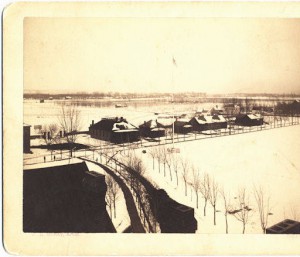 The Nebraska Memories picture of the fort to the right, was taken about that same time period.
The Nebraska Memories picture of the fort to the right, was taken about that same time period.
Fort Omaha today is primarily occupied by Metropolitan Community College, but continues to house Navy, Marine and Army Reserve units. The fort is located in the present-day Miller Park neighborhood of North Omaha. The Fort Omaha Historic District is listed on the National Register of Historic Places. The district includes the 1879 General Crook House Museum, as well as the 1879 Quartermaster’s office, 1878 commissary, 1884 guardhouse, 1883 ordnance magazine and 1887 mule stables.
In 1907 the Army built a large steel hangar at Fort Omaha for use in experiments with dirigibles, a program that was abandoned in 1909. This program and its successor, the military use of hot air balloons for reconnaissance missions, were part of the American Expeditionary Forces. A balloon house was built in 1908, and in 1909 the first balloon flight took place. Here is a picture from Nebraska Memories of the Balloon House at Fort Omaha, taken sometime between 1908 and 1910:
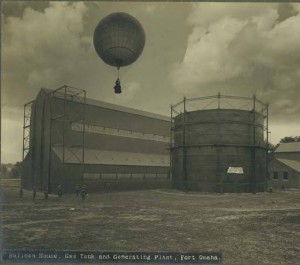 Shortly after the United States entered World War I, 800 men enlisted in the Aviation Section, U.S. Signal Corp, one of whom was William Spencer Barker, from Spencerport, NY. They were immediately sent to the Balloon School at Fort Omaha for training. More than 16,000 airmen went through the Balloon Schools at Fort Omaha and other locations around the U.S., between 1908 and the close of the program in 1919.
Shortly after the United States entered World War I, 800 men enlisted in the Aviation Section, U.S. Signal Corp, one of whom was William Spencer Barker, from Spencerport, NY. They were immediately sent to the Balloon School at Fort Omaha for training. More than 16,000 airmen went through the Balloon Schools at Fort Omaha and other locations around the U.S., between 1908 and the close of the program in 1919.
Balloonists were trained in map reading and charting troop movements. This information was communicated through an extensive switchboard system to artillery troops on the ground. The balloons were “captive” stationary balloons, utilized tail fins for stabilization, and had cables to tether the balloon to the ground.
In 1917, 2nd Lieutenant Baker was part of the 5th Squadron, Balloon Division, and did see military action with balloon squadrons in France from 1918-1919.
Visit Nebraska Memories to search for or browse through many more historical images of digitized from photographs, negatives, postcards, maps, lantern slides, books and other materials.
Nebraska Memories is a cooperative project to digitize Nebraska-related historical and cultural heritage materials and make them available to researchers of all ages via the Internet. Nebraska Memories is brought to you by the Nebraska Library Commission. If your institution is interested in participating in Nebraska Memories, see http://nlc.nebraska.gov/nebraskamemories/participation.aspx for more information, or contact Beth Goble, Historical Services Librarian, or Devra Dragos, Technology & Access Services Director.
What’s Sally Reading?
 ALA Youth Media Awards will be Announced on February 2, 2015
ALA Youth Media Awards will be Announced on February 2, 2015
The awards ceremony will be broadcast at 8:00 a.m. CT on Monday, Feb. 2, 2015, during the ALA Midwinter Meeting & Exhibition in Chicago. You can join them live via your computer if you have the time. Go here to find the link to join their live webcast. If you prefer, you can follow I Love Libraries on Twitter and Facebook instead. I will be clicking on the “webcast” link hoping I can be added to the many people joining via the Internet. If you click the link now, you will see a countdown clock for the event.
I will send out the list of winners and honor books as soon as I receive the press release, so if you are unable to attend you will still learn about the awards not long after the video announcements.
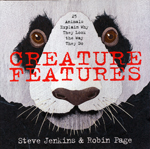 Creature Features: Twenty-Five Animals Explain Why They Look the Way They Do by Steve Jenkins and Robin Page. Their newest title looks at 25 animals with unusual features and explains why they have them. For example, the leaf-nosed bat uses its unusual nose to direct sounds to its ears. Art dominates each page with a brief question and answer, readers will be intrigued. The art always shows the animals head and face from the front, and not much of the rest of their bodies. Readers may be curious enough to go looking for complete photos or illustrations of the named creatures. This title is great for preschool through second grade.
Creature Features: Twenty-Five Animals Explain Why They Look the Way They Do by Steve Jenkins and Robin Page. Their newest title looks at 25 animals with unusual features and explains why they have them. For example, the leaf-nosed bat uses its unusual nose to direct sounds to its ears. Art dominates each page with a brief question and answer, readers will be intrigued. The art always shows the animals head and face from the front, and not much of the rest of their bodies. Readers may be curious enough to go looking for complete photos or illustrations of the named creatures. This title is great for preschool through second grade.
(The Nebraska Library Commission receives free copies of children’s and young adult books for review from a number of publishers. After review, the books are distributed free, via the Regional Library Systems, to Nebraska school and public libraries.)
Posted in Books & Reading, General, Youth Services
Leave a comment
Throwback Thursday: Rural teachers from Wausa, Nebraska area, circa 1941-1943
Rural Wausa, Nebraska area teachers with donated books for the Victory Book Campaign, circa 1941-1943.
Posted in General
Leave a comment
The Data Dude – Surveys and Stereotypes
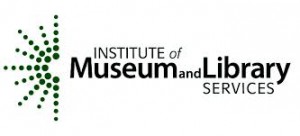 The Dude has been working on the IMLS SLAA (State Library Administrative Agency) survey. Yes, I can relate to the frustration associated with trying to gather the correct and accurate data for these kinds of things because I have to do it too. I asked some of my colleagues here at the commission for answers to some of these survey questions, and one of them responded that they were suffering from Data Dirge. Alas, keep in mind that the data collected on these surveys is helpful and often does result in illustrations that show library trends. That’s the story, anyway.
The Dude has been working on the IMLS SLAA (State Library Administrative Agency) survey. Yes, I can relate to the frustration associated with trying to gather the correct and accurate data for these kinds of things because I have to do it too. I asked some of my colleagues here at the commission for answers to some of these survey questions, and one of them responded that they were suffering from Data Dirge. Alas, keep in mind that the data collected on these surveys is helpful and often does result in illustrations that show library trends. That’s the story, anyway.
Reminders were sent to libraries this week about the upcoming (in about a month) deadline for the public library survey. You can log in to your survey from the Bibliostat section of the NLC website. Since the Dude has been busy working on other things, such as reviewing your submitted surveys and drafting Advocacy Day hand-outs, he didn’t have a whole ton of time to fashion this blog post. Thus, we will end with a quote he found humorous, from the writer, Bidisha, and published in The Guardian. Bidisha mentions seven things she’ll miss about the traditional library (all of which will disppear when the library is “modernized”), one of which is the stereotypical librarian:
“Librarians would prefer it if libraries had no people in them mucking things up; then they could just walk along the aisles alphabetising everything and dusting book spines. They have developed a higher consciousness, hyper-sensitive to specks of dust, sounds and movements well beyond the normal range of human cognisance. Should we speak in the no-speaky zone, we will be punished. Should we be late giving back that copy of Madhur Jaffrey’s classic Indian recipes, we will be penalised. If the photocopier is malfunctioning they will sigh heavily and imply that we have somehow sabotaged its workings. They might sometimes seem petty and insular, but where would we be without librarians’ moral certainty and exceptional dress sense? Any combination of taut and ropy tweed, plastic pastel beads, glasses on a chain, frosted Angel Delight hair, blue eyeliner, high collared nylon blouses, comfortably soled shoes and flesh toned hosiery will do.”
And speaking of wardrobes, there is a website devoted to photos of librarian styles. If you are looking to kill some time, check out some of the photos that alleged librarians have posted there. You won’t find the Dude there, but you might find a few laughs. Shaka.
Posted in General, Library Management, Uncategorized
Leave a comment
2015 Nebraska Travel Guide
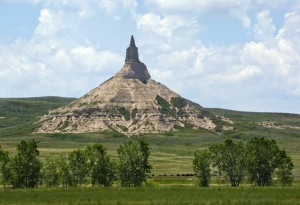 The new 2015 Nebraska Travel Guide is now available free from the Nebraska Travel Commission.
The new 2015 Nebraska Travel Guide is now available free from the Nebraska Travel Commission.
Copies are available individually and in quantities.
To request copies of the 2015 Nebraska Travel Guide please contact Kaitlyn Watermeier at ntc.tourism2@nebraska.gov or call Kaitlyn at 402-471-3744.
Friday Reads: Wild by Cheryl Strayed
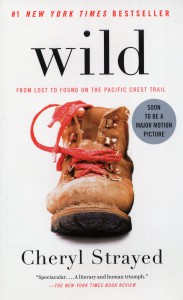 My husband and I recently saw the movie based on this book, which we enjoyed though there are certainly some tough things the author went through in her life. The film did leave us with some questions and when we saw a paperback copy at the bookstore we both immediately wanted to buy it to learn more about her experiences. I have always been intrigued by long distance endurance hikes, such as the Appalachian Trail, and this story and trail also caught my attention.
My husband and I recently saw the movie based on this book, which we enjoyed though there are certainly some tough things the author went through in her life. The film did leave us with some questions and when we saw a paperback copy at the bookstore we both immediately wanted to buy it to learn more about her experiences. I have always been intrigued by long distance endurance hikes, such as the Appalachian Trail, and this story and trail also caught my attention.
I am closing in on the halfway mark on the book. It has answered a few questions already, and given me a look at what is involved in succeeding with challenge of this nature, as well as the impact it had on the author’s life. I did enjoy occasional backpack trips in the Rocky Mountain National Park when I lived in Colorado, but those were only one or two nights. This is, of course, an entirely different level of hiking.
The book does some jumping back and forth between her hike on the Pacific Crest Trail and the things in the author’s past that sent her to the trail. Readers may be astounded at times at her lack of preparedness, but will likely want to know more about her experience, as I do. I will emphasize that this is an adult book, since I am known for reading books for children and teens, and is one I am eager to finish.
Throwback Thursday: Children get books at the Nebraska Public Library Commission Bookmobile, circa 1930’s
Children from School District 32 visit the Nebraska Public Library Commission Bookmobile, circa 1930’s.
Posted in Books & Reading, General, Nebraska Memories
Leave a comment
The Data Dude – New Systems Map
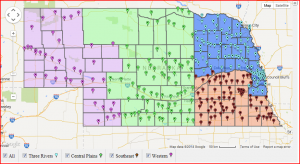 Shaka. This week I will show you an interactive map of the new library systems. This map illustrates the new systems and has markers for each library. You can filter the markers (see the legend at the bottom) by system. If you click on an individual marker, you will get a pop-up box that tells you the name of the library, its system, service population, and a link to more information about it from the NLC website. If you click on any of the dead space within the map, you will get a pop-up indicating what Nebraska County you clicked on and a link to the website for the corresponding system. There is also a small arrow in the upper-right hand corner. If you click on that, it expands a list of the libraries by library name. Please let me know if you have any questions or notice any errors.
Shaka. This week I will show you an interactive map of the new library systems. This map illustrates the new systems and has markers for each library. You can filter the markers (see the legend at the bottom) by system. If you click on an individual marker, you will get a pop-up box that tells you the name of the library, its system, service population, and a link to more information about it from the NLC website. If you click on any of the dead space within the map, you will get a pop-up indicating what Nebraska County you clicked on and a link to the website for the corresponding system. There is also a small arrow in the upper-right hand corner. If you click on that, it expands a list of the libraries by library name. Please let me know if you have any questions or notice any errors.
Talking Book Advisory Committee Seeks Nominees
FOR IMMEDIATE RELEASE
January 6, 2015
FOR MORE INFORMATION
David Oertli
402-471-4005
800-742-7691
Talking Book Advisory Committee Seeks Nominees
Four vacancies currently exist on the Advisory Committee to the Nebraska Library Commission Talking Book and Braille Service. The purpose of the committee is to represent the needs of talking book and Braille borrowers and to make recommendations concerning library policies, services, and programs. Membership consists primarily of library users but may include librarians, educators, health care providers, and others who understand the needs of individuals with disabilities. The committee normally meets twice a year.
The Talking Book and Braille Service provides free talking books, magazines, playback equipment, and Braille to any resident of Nebraska who cannot see regular print, or hold a book, or turn its pages. Books and magazines are received and returned through the mail postage-free or are downloaded directly from the Internet. Persons interested in serving on the committee should contact Talking Book and Braille Service, 1200 N Street, Suite 120, Lincoln, NE 68508-2023. Phone: 402-471-4005 or 800-742-7691, fax: 402-471-6244, email: nlc.talkingbook@nebraska.gov. Deadline: March 15.
As Nebraska’s state library agency, the Nebraska Library Commission is an advocate for the library and information needs of all Nebraskans. The mission of the Library Commission is statewide promotion, development, and coordination of library and information services-“bringing together people and information.”
###
The most up-to-date news releases from the Nebraska Library Commission are always available on the Library Commission website, http://nlc.nebraska.gov/publications/newsreleases.
January webinar: Pathways to Guide Health Education at Your Library
Registration is now open for our January webinar: Pathways to Guide Health Education at Your Library:
Monday, January 26th
2:00 PM Eastern/11:00 AM Pacific
Access to reliable consumer health information is an essential component of individual and community well-being. Because of their unique role and reputation for being open and available to all, public libraries bring valuable assets to supporting local community health efforts. In this WebJunction webinar, participants will explore essential pathways for libraries to address meaningful health information and services. Participants will be introduced to foundational considerations for ensuring ethics and privacy in patron interactions, maintaining health collections at the public library, addressing community health literacy, and supporting healthy communities through partnerships. Participants will also be introduced to resources to advance these topics in their community, and leave the session prepared to join the strong network of public libraries advancing health education nationwide.
Learn more and register here: http://webjunction.org/events/webjunction/pathways-guide-health-education.html
Thanks for your help!
 You may remember earlier this year we asked for help in transcribing two autograph albums in Nebraska Memories that belonged to May Martin Ellis and her husband John Ellis. The project was a great success and it only took one week for both albums to be transcribed. We want to thank everyone who helped make this project a success.
You may remember earlier this year we asked for help in transcribing two autograph albums in Nebraska Memories that belonged to May Martin Ellis and her husband John Ellis. The project was a great success and it only took one week for both albums to be transcribed. We want to thank everyone who helped make this project a success.
For those of you not familiar with the project these albums contain many pages of handwritten inscriptions. Some are easy to read while  others take a bit more effort to decipher. Transcribing the handwriting makes it easier to read the inscriptions and makes the albums searchable. As you read the transcriptions remember we did our best to type the text as it was written and did not fix any of errors. This means you will find phrases such as “always paddle your one cenue” and “In the depth of thine- Effeetiend[?] , please plant a sweat Fore-get me not.” The question mark in the brackets means that we were unable to clearly read the handwriting and typed our best guess. If you are have having a hard time deciphering those phrases my guess is that they meant to say “always paddle your own canoe” and “In the depth of thine affection plant a sweet forget me not”.
others take a bit more effort to decipher. Transcribing the handwriting makes it easier to read the inscriptions and makes the albums searchable. As you read the transcriptions remember we did our best to type the text as it was written and did not fix any of errors. This means you will find phrases such as “always paddle your one cenue” and “In the depth of thine- Effeetiend[?] , please plant a sweat Fore-get me not.” The question mark in the brackets means that we were unable to clearly read the handwriting and typed our best guess. If you are have having a hard time deciphering those phrases my guess is that they meant to say “always paddle your own canoe” and “In the depth of thine affection plant a sweet forget me not”.
The transcriptions available in Nebraska Memories can be viewed in three different places in the interface. While I’m focusing on these two albums the viewing options apply to all items in the collection that include transcriptions. Let me show you how you can search and view the transcribed text.
While working with these albums I remember reading at least one reference to dishes that I found amusing but unfortunately I don’t know which album it was in. A search for the word dishes shows that the word appears in both albums. I am going to look at May’s album. When I click on the link to her album from the search results page I’m taken directly to page 42 in the album where Eva has written a note to May about washing dishes.
 As I mentioned there are three places where the transcription can be viewed. The first place is towards the bottom of the page in the area labeled Description. The second place is on the Text tab. This tab is located just above the album page between the Image tab and the search box.
As I mentioned there are three places where the transcription can be viewed. The first place is towards the bottom of the page in the area labeled Description. The second place is on the Text tab. This tab is located just above the album page between the Image tab and the search box. 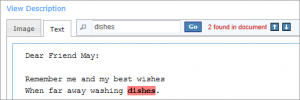 These two tabs can be used to switch between the Image view and Text (transcript) view of the page. After clicking on the Text tab you will see the word dishes highlighted. Also note when you are on the Text tab that up and down arrows now appear next to the phrase “2 found in document”. Use these arrows to move to the previous and next instances of your search term.
These two tabs can be used to switch between the Image view and Text (transcript) view of the page. After clicking on the Text tab you will see the word dishes highlighted. Also note when you are on the Text tab that up and down arrows now appear next to the phrase “2 found in document”. Use these arrows to move to the previous and next instances of your search term.
 The last way to view the transcription is by clicking on the View Image & Text link. This view allows you to see the transcribed text and the image at the same time. To adjust the widths of the text and image area click on the slider button and drag it left or right. Use the thumbnails at the bottom of the page to move from page to page.
The last way to view the transcription is by clicking on the View Image & Text link. This view allows you to see the transcribed text and the image at the same time. To adjust the widths of the text and image area click on the slider button and drag it left or right. Use the thumbnails at the bottom of the page to move from page to page.
As the New Year begins I hope you take a few minutes to explore these albums and all of the digitized photographs, negatives, postcards, maps, lantern slides, books and other materials available through Nebraska Memories.
Nebraska Memories is a cooperative project to digitize Nebraska-related historical and cultural heritage materials and make them available to researchers of all ages via the Internet. Nebraska Memories is brought to you by the Nebraska Library Commission. If your institution is interested in participating in Nebraska Memories, see http://nlc.nebraska.gov/nebraskamemories/participation.aspx for more information, or contact Beth Goble, Historical Projects Librarian, or Devra Dragos, Technology & Access Services Director.
The Data Dude – Dark Nights of the Soul
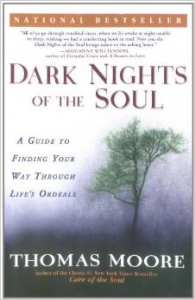 In an earlier post, I postulated that the philosophy of author Thomas Moore (Dark Night of the Soul: A Guide to Finding Your Way Through Life’s Ordeals) seems to me to be a formidable alternative (or response) to my own intermittent struggles with pessimism. The obvious question is: How on earth might this relate to libraries? Read on, but for the time being, I believe it is necessary to expound on some ideas to further relate what’s been on my mind. It’s at least important to me, and it may also be important to you. Who Knows? If you don’t think so and would rather not waste your time on the filler material, skip to the last two paragraphs (that’s the library part). If this is a ride you’d rather not be on, no offense if you leave right now. Hey, at least I’m not bugging you about a survey.
In an earlier post, I postulated that the philosophy of author Thomas Moore (Dark Night of the Soul: A Guide to Finding Your Way Through Life’s Ordeals) seems to me to be a formidable alternative (or response) to my own intermittent struggles with pessimism. The obvious question is: How on earth might this relate to libraries? Read on, but for the time being, I believe it is necessary to expound on some ideas to further relate what’s been on my mind. It’s at least important to me, and it may also be important to you. Who Knows? If you don’t think so and would rather not waste your time on the filler material, skip to the last two paragraphs (that’s the library part). If this is a ride you’d rather not be on, no offense if you leave right now. Hey, at least I’m not bugging you about a survey.
According to Vered Arnon, Nietzsche repeatedly stressed that nihilism is a “transitional stage”. It is a facilitator for a reevaluation of one’s values, or a new way of thinking about who we are. The freedom comes in accepting the reality of this transition. In her Radiolab podcast, Brooke Gladstone summarizes the Sisyphean nature of this: “I think there are cycles in which the sense of meaningless comes out in sharper relief than other times, but you can identify them over and over again.” I’m learning that trying to avoid my own dark nights and failing to realize the transitional or perhaps synthesizing effect they might have on my life only leads to more despair. The recognition of the importance of this synthesis is an essential catalyst to help discover self, soul, true diversity, community, and empathy. Part of this discovery involves expression in one form of another. I am extremely grateful for the opportunity for self-expression in the form of this blog (throwing in a bit of gratitude doesn’t hurt, either). Again, Brooke Gladstone:
“Camus [said] that the best response is to rebel. Rebel against death, create life on your own terms. Build it for yourself. And one way or another we do. Sometimes we don’t live a very conscious life. But we’re living life. I just think that, this time if anything, we have just grown vaguely uncomfortable in this life that seems so chaotic. But in our lives barely touches us. Essentially, we’re taking in the world through the media. So it may feel more deadening, but it’s less intense. If you had to confront it because the conditions of your life have just crumbled to dust and your beliefs can no longer be sustained, I bet you’d have more energy for it.”
Part of my purpose in posting these blogs (in addition to it being somewhat cathartic for myself and hopefully somewhat informative for you) is an attempt to relate a certain sense of trust, uniformity, significance, purpose, and relationship. I think that this has the potential to be applicable for libraries, how your run your shops, and how you relate to your library visitors and each other. Most of us librarians feel an overwhelming sense of commitment to community. Some of us have lost touch with that, including where we live, the individual persons we serve, the larger community events, places, and being (and feeling) connected. I’d like to think the library story can be more than the things (physical, digital, and virtual) offered, and more than the tools used to tell the story (inforaphics, graphs, and statistics). While the things (physical, digital, and virtual) are essential parts of the library’s existence, they tell us nothing about the real world we live in. The things and services that libraries provide can be important catalysts in building community, connectedness, and soul among individuals, but it requires the individuals working independently of all the stuff that libraries offer. The stuff only provides more opportunity for connection.
By their nature, libraries should function as empathetic places that can facilitate these individual and collective life transformations. Sometimes, this can be as simple as providing a book for someone to read (e.g. my Dark Nights of the Soul example); other times it might be providing a safe place that offers opportunities to feed compassion (either staff/visitor, visitor/visitor, or staff/staff); still at other times, it might be community sponsored events by the library that build relationships between people. I’ve heard of some great library programs in Nebraska where librarians go out in the community for events that build these kinds of relationships instead of waiting behind the desk for someone to wander in. One very important factor is acknowledging that those who frequent libraries (or who may be coming to them for the first time), might be in the middle of their own Dark Night of the Soul, and might have few other places to turn. Or they just might choose to turn to the library in an auxiliary fashion, even though there are other places or support systems that are available to them. Either way, providing a warm, welcoming, non-judgmental environment is essential to this self-discovery. I suppose one of the reasons I mention this is to acknowledge my own day to day doldrums and routines. Annie Dillard, in The Writing Life, concluded that: “How we spend our days is, of course, how we spend our lives.” It might be worth noting that I think we often get caught up in trying to find a larger, higher meaning in our lives, or suffer greatly if we don’t think we’ve found or achieved it. Simplicity should be something that is valued and cherished, rather than something that is underrated or unappreciated. Most, if not all, work is inherently meaningless. Iyeshka Farmer sums this up much better than I can: “It is not our work that gives meaning to our lives. It is our living fully, deep in awareness of our Being, our values, and our vision, that gives meaning to our work-regardless of what that work is.” Shaka.
Posted in Books & Reading, General, Library Management, Uncategorized
Leave a comment
What’s Sally Reading?
 <>Journals Reveal Their Choices in Best Books:
<>Journals Reveal Their Choices in Best Books:
Three journals have presented theirs lists of best books of 2014 giving us all a good chance to look and see what we may have missed. Kirkus listed the hilarious early chapter book Let’s Get Cracking by Cyndi Marko, first title in the “Kung Pow Chicken” series and perfect for next summer. Booklist includes Kenneth Oppel’s Boundless on their list. And as I mentioned in my last post, the School Library Journal list is here. They include one of my favorite nonfiction titles of the year: Red Madness: How a Medical Mystery Changed What we Eat by Gail Jarrow.
I hope you have fun perusing the lists, happy that you have already purchased some of the titles, and deciding which other ones you will add to your collection. My “to read” list just doubled.
 A Perfectly Messed-Up Story by Patrick McDonnell is a terrific read-aloud for story time. The main character, Louie, is happily skipping along, but when you turn the page you see he was headed for a splat of jelly someone spilled on the book. His story becomes completely derailed as more damage is found. Kids will love his reaction to the mess and while there is one page that is dictatorial about how to treat books, they will enjoy the message.
A Perfectly Messed-Up Story by Patrick McDonnell is a terrific read-aloud for story time. The main character, Louie, is happily skipping along, but when you turn the page you see he was headed for a splat of jelly someone spilled on the book. His story becomes completely derailed as more damage is found. Kids will love his reaction to the mess and while there is one page that is dictatorial about how to treat books, they will enjoy the message.
(The Nebraska Library Commission receives free copies of children’s and young adult books for review from a number of publishers. After review, the books are distributed free, via the Regional Library Systems, to Nebraska school and public libraries.)
Posted in Books & Reading, General, Youth Services
Leave a comment


